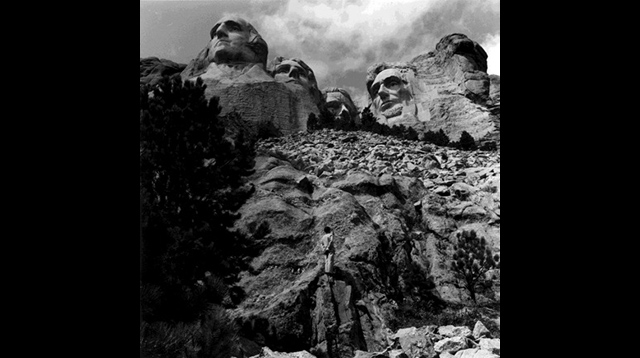EVANSTON - The Block Museum of Art is pleased to announce the acquisition of a suite of works by photographer Tseng Kwong Chi (1950-90).
Two significant photographs by the artist were recently presented to the museum as a gift from its board of advisors in honor of Daniel Linzer, who served as Northwestern University provost from 2007-17. As provost, Linzer was instrumental in championing the Block’s interdisciplinary mission and vision. Linzer departed from Northwestern in July 2017 to serve as president of the Research Corporation for Science Advancement (RCSA).
In conjunction with the board’s gift, seven additional works were generously gifted directly to the museum from Muna Tseng Dance Projects Inc. and the Estate of Tseng Kwong Chi. New York-based dancer/choreographer Muna Tseng is the sister and executor of her late brother’s estate.
“The Block Museum is doubly grateful, first to Daniel Linzer for his decade of service to Northwestern University and for his unflagging support of the Block Museum of Art,” said Lisa Corrin, the Block Museum’s Ellen Phillips Katz director. “We are also grateful to our board of advisors who recognized the importance of Linzer’s leadership to the Block’s success and for their generosity in bringing Tseng Kwong Chi’s important work to Northwestern University, where it will be used in teaching and learning across campus.”
About Tseng Kwong Chi
Born in Hong Kong, educated in Vancouver and Paris and later based in New York City, Tseng Kwong Chi produced a large body of witty, playful performance-based photography that both captured the pivotal downtown Manhattan art and club scenes of the 1980s and reflected the increasingly globalized movement of people across nations and continents. Chi called himself an "inquisitive traveler, a witness of my time and an ambiguous ambassador." His works alternately function as witness to his life and community and as wry social commentary, raising critical questions about identity and culture.
In the fall of 2016, the Block Museum of Art presented the major exhibition “Tseng Kwong Chi: Performing for the Camera,” which originated with New York University’s Grey Art Gallery and the Chrysler Museum of Art in Norfolk, Virginia. The exhibition featured more than 80 photographs including well-known works from the series “East Meets West (Expeditionary Self-Portraits)” and “Costumes at the Met, New York,” which the board of advisors purchased for the museum.
About the Block Museum Gift
This selection of photographs acquired by the Block Museum provides a sample of Tseng’s artistic evolutions, starting with his cultural role-playing at a costume gala at the Metropolitan Museum of Art in the “Costumes at the Met” series(1980). Posing with socialites and major figures from the worlds of art, politics and fashion while dressed in his iconic Mao suit, Tseng took snapshots that freeze moments of perfectly orchestrated irony.
Four of the works are from Tseng’s “Moral Majority” series, which were originally taken for a story in a 1981 Soho Weekly News article entitled “Right Face: The Conservative Cast in Focus.” For the series, Tseng invited individuals associated with the politically conservative Moral Majority to pose in front of a wrinkled American flag. When asked about the condition of the flag, Tseng replied that it was meant to look as if it were blowing in the wind. In this series, Tseng exchanges his Mao suit for a seersucker suit to identify with, rather than distinguish himself from, his subjects.
The acquisition also features later photographs from Tseng’s “Expeditionary Series.” Where earlier photographs from his tours around the world feature Tseng large in the frame, standing tall and confident in front of Notre Dame in Paris or in the middle of Times Square, these two examples of later works (“Mt Rushmore, North Dakota” (1986); and “Wisconsin, (tractors)” (1987) represent the culmination of his work in compositions that drown his dwarfed figure and seem to highlight the overwhelming power of his surroundings.
Tseng’s work is in line with the Block’s commitment to collecting art created from diverse perspectives while expanding upon the collection’s traditional areas of strength in photography and works on paper. In addition to being influential within the New York scene of the 1980s, Tseng’s work has played an important role in the development of contemporary Chinese art. In the 1980s, artists such as Ai Weiwei, Zhang Huan and Song Dong learned about Tseng’s photographs through American art magazines and were influenced by his work. The Block is committed not only to maintaining a global perspective but to promoting interdisciplinary discussions, both of which are highlighted by Tseng’s humorously critical and satirical photographs.


